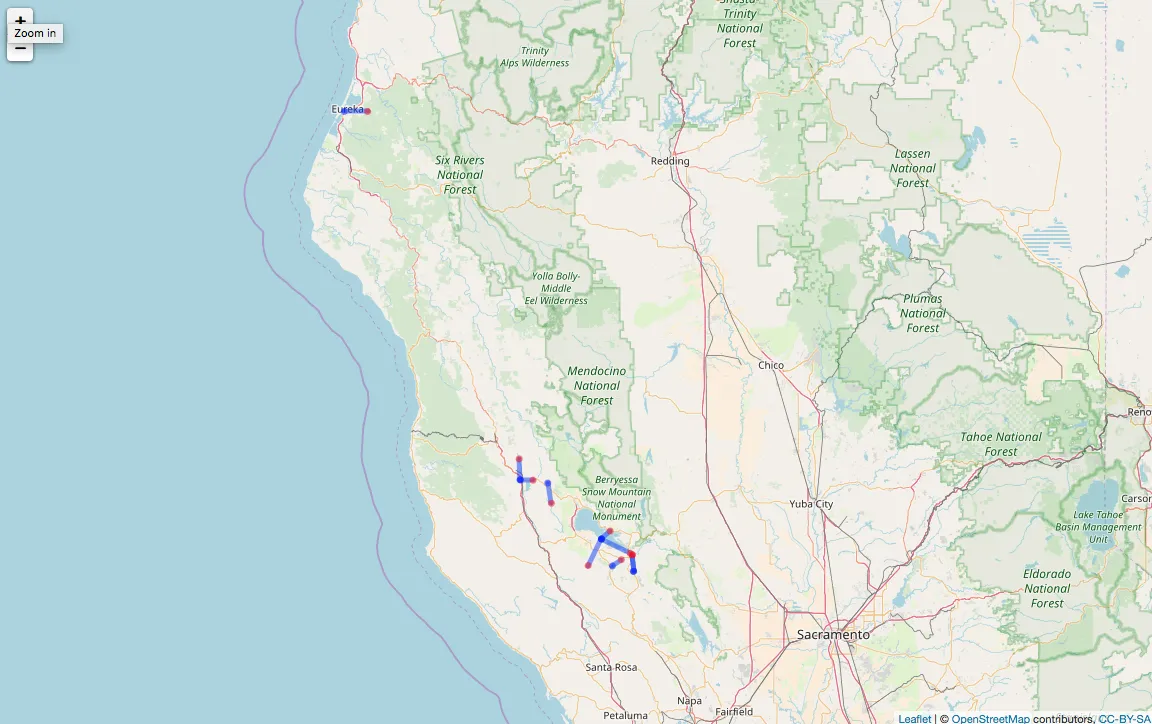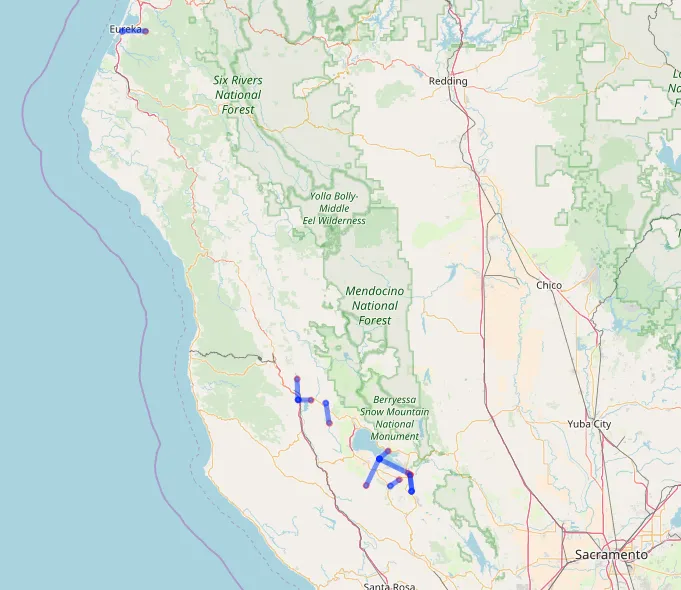我看到类似的问题,但目前还没有符合我的需求的(至少我理解的程度),所以如果这个问题已经被回答了,我提前道歉。同时,我对 R 也不是很熟悉。
我有一个数据框,其中每行都包含两组纬度/经度。实际数据包含数百行和许多相关数据的列。我正在为这两组纬度/经度绘制点,并希望绘制连接每一对点的线作为单独的线条。这里是结果应该看起来像的示例。
这是数据的简化示例。事件和位置将会有重复的值。
我有一个数据框,其中每行都包含两组纬度/经度。实际数据包含数百行和许多相关数据的列。我正在为这两组纬度/经度绘制点,并希望绘制连接每一对点的线作为单独的线条。这里是结果应该看起来像的示例。
这是数据的简化示例。事件和位置将会有重复的值。
Event_lat Event_lon Event Location Location_latitude Location_longitude
40.791151 -124.054008 704832643 60005 40.790961 -124.1825609
38.900882 -122.660353 704653051 60009 38.873889 -122.709722
38.921488 -122.600049 704681147 60011 38.85111099 -122.593333
38.921488 -122.600049 704681147 60011 38.85111099 -122.593333
39.141877 -123.044724 706777142 60012 39.22794396 -123.064722
38.928113 -122.611386 708644013 60016 38.98950003 -122.7695828
39.02361 -122.72195 708582623 60016 38.98950003 -122.7695828
38.87586 -122.842684 708336092 60016 38.98950003 -122.7695828
39.239926 -123.145497 709020144 60017 39.24138798 -123.2163878
39.3307 -123.221674 708875205 60017 39.24138798 -123.2163878
这里是一个简化的示例代码,用于映射点:
library(leaflet)
myData <-read.csv("Book1.csv",header=TRUE, sep=",")
leaflet()%>%
addTiles() %>%
addCircles(myData,lng = myData$lsr_lon,lat = myData$lsr_lat, radius=20, color = "red",group = "events") %>%
addCircles(myData,lng = myData$site_longitude,lat = myData$site_latitude, radius=20, color = "blue",group = 'Locations')


- 您的图像似乎并未被包含在内。
- 请问您能否尝试运行
- tjebodput(head(your data frame))